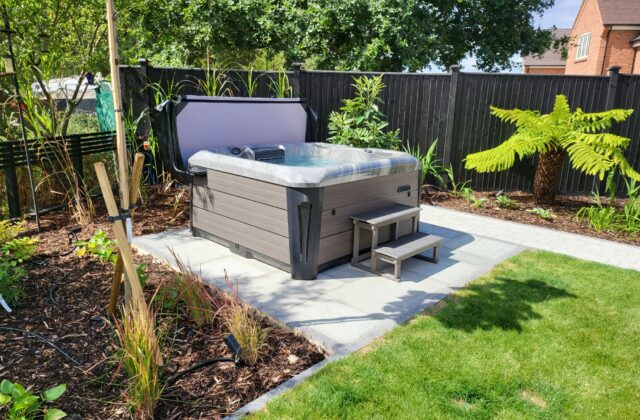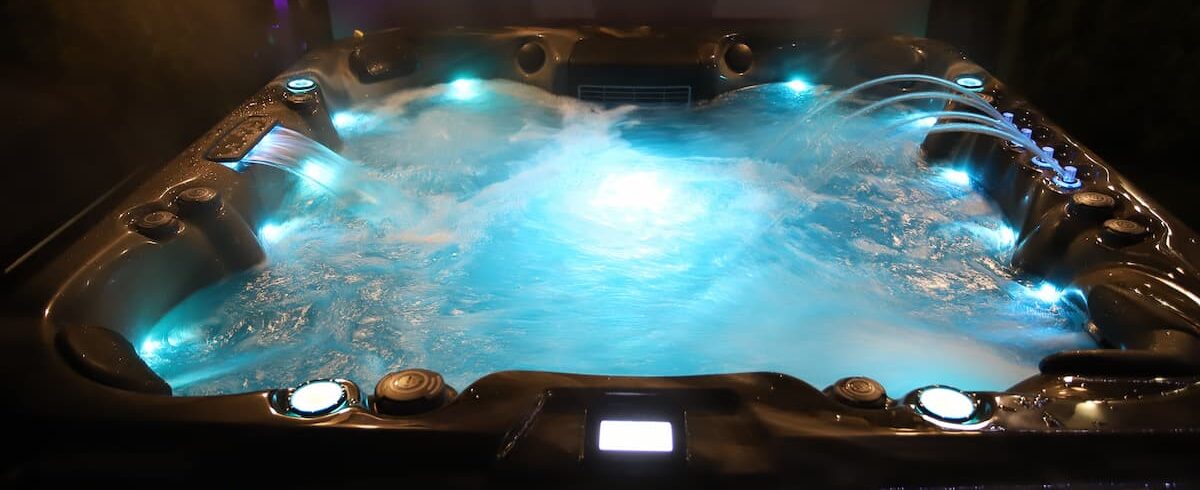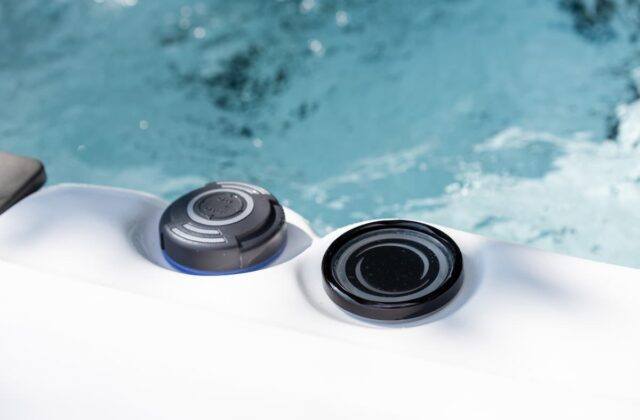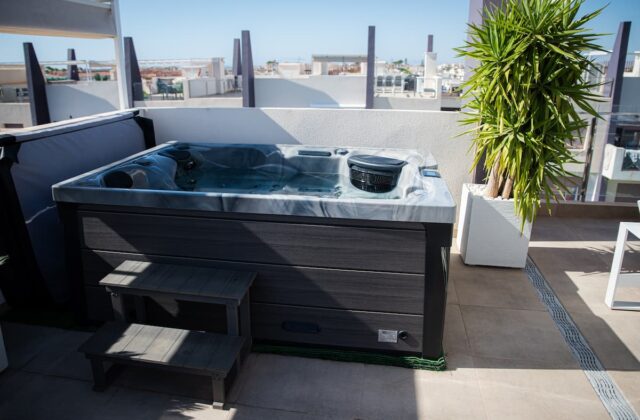High alkalinity in a hot tub can cause a whole host of different issues, ranging from reduced sanitiser efficacy to skin issues. Yet, understanding alkalinity, what it is, why it matters and how to keep it down are an important part of owning a hot tub. In this guide, we’ll show you how to lower alkalinity in a hot tub and the problems that high alkalinity can cause. When you’re ready to get started, read on.
How to Lower Your Hot Tub’s Alkalinity
If you’d like to lower your hot tub’s alkalinity, you’ll need to use a specialist product, called a pH reducer. If you need a quick solution, you can also use a litre of white vinegar to lower the hot tub’s alkalinity.
What Is Alkalinity and Why Does It Matter?
The term ‘alkalinity’ refers to the levels of basic chemicals in your water. On the pH scale, which measures acidity and alkalinity, the alkaline end of the scale are the numbers above seven, while the acid end of the scale are the numbers below seven, with seven on the pH scale representing pure water at 25 degrees centigrade.
We often think of acids as being harsh chemicals, but alkaline chemicals and compounds can be harsh too. Some examples of basic chemicals include bleach and ammonia.
Your hot tub shouldn’t be kept at seven on the pH scale, but it should be slightly basic, between 7.2 and 7.8.
Why Alkalinity Matters
If your hot tub becomes too alkaline, it can lead to some serious issues. These range from damage to your hot tub to damage to your body!
Increased Calcium Scaling
Once your hot tub’s pH increases to above eight, limescale can start to become much more common. Limescale can go from being a non-issue to encrusting your hot tub very rapidly. High alkalinity can also affect any water-softening or hardening products that you use, affecting a key part of regular hot tub maintenance. What’s more, if you reduce the alkalinity level of your hot tub, you’ll slightly soften it. This calcium scaling can also make the water cloudy and unpleasant to bathe in.
Reduced Sanitiser Efficiency
Chlorine has a very high pH – liquid chlorine has a pH of 13, representing its incredibly potent alkalinity. Chlorine is commonly used as a sanitizing agent for hot tubs, and if your water already has a high pH, its efficacy is significantly reduced. This means that you’ll need to use more chlorine, which increases your tub’s pH even further.
Skin Irritation
If alkalinity gets too high, it can lead to skin irritation and itching. If you get the water in your eyes, it may lead to a burning sensation.
Determining Your Hot Tub’s Alkalinity
To find out what your hot tub’s alkalinity is, you should use pH strips. These will turn a certain colour, showing what pH your water is. This means that they will not only show you if your hot tub’s water is too alkaline, but they will also show you if it’s too acidic.
How to Lower and Maintain Your Hot Tub’s Alkalinity: In-Depth
In this section, we’ll explore in more depth how you can lower your hot tub’s alkalinity and how to maintain it at an ideal level.
Lowering Your Hot Tub’s Alkalinity
If you’re experiencing high alkalinity in a hot tub, your first priority should be to lower it as soon as possible. You should lower it with a specialist chemical called a pH reducer, which is made of an acidic chemical such as sodium bisulphate. Be careful when handling your pH reducer as it may be toxic or corrosive.
If you do not have any pH reducer on-hand, and you would like a fast solution, you can use white vinegar. This should not be used as a regular solution, however.
Maintaining Your Hot Tub’s Alkalinity
Once you have lowered your hot tub’s alkalinity, you will need to keep it at a safe level. Testing the water’s pH is a regular part of maintenance, and you should have both pH reducers and pH increasing agents as part of your hot tub’s maintenance kit.
You should test the pH of your water every day and take appropriate action as required, whether you are using the hot tub or not. This will prevent any of the issues that we have mentioned from arising.
Keeping Alkalinity Stable Is Vital
We hope that you’ve found this guide on managing your hot tub’s alkalinity helpful. Balancing your hot tub’s pH is a vital part of hot tub maintenance and one that you should never neglect to carry out.
If you’ve not carried out regular checks in the past, there’s no better time to start than now.
At Platinum Spas, we sell a range of innovative hot tubs and swim spas. Contact us today to view one of our products or to speak to an expert in more detail.
High Alkalinity in a Hot Tub: FAQs
Will Alkalinity Decrease On Its Own?While your hot tub’s alkalinity will decrease on its own over time, it can have several knock-on effects, such as unclean water due to decreased sanitiser efficiency. Therefore, it’s important not to leave this issue untreated.
What Neutralises Alkalinity?Alkalinity is neutralised through the use of acids. You should only use certain acids, however, as some are far too strong to safely use in a hot tub.
Sarah Elphick is our passionate head of marketing who has years of experience within the leisure, travel & tourism industry. She is well-versed in a range of marketing fields including sales, direct marketing, CRM, brand management, innovation, customer research and much more. Her experience has helped us expand our brand into one of the fastest growing and innovative hot tub manufacturers.
Latest posts by Sarah Watkins
(see all)


